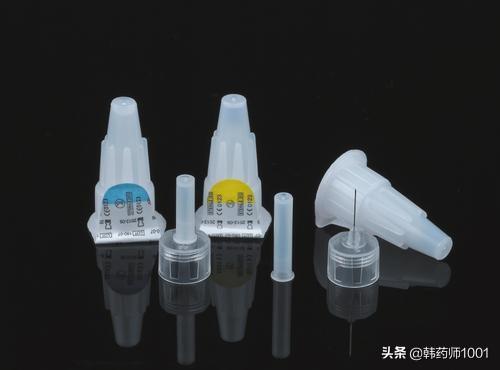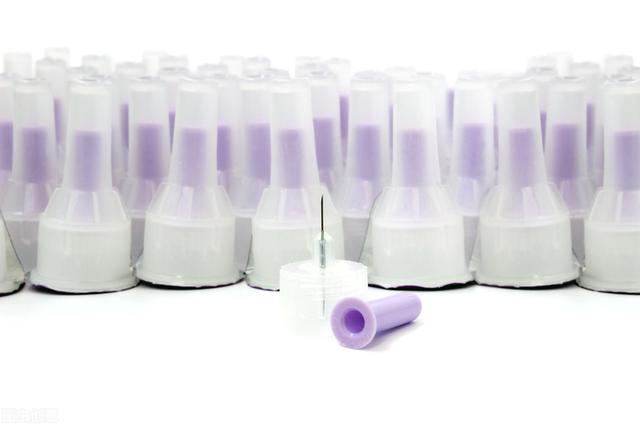Diabetic pregnancy insulin shot to the stomach what if it hits the baby?
You need to relax. You don't need to be overly anxious.Insulin doesn't hit children.The specific analysis is as follows!

We know that insulin works by injecting it under the skin, so where is it injected? The answer is the subcutaneous fat layer! And we know that insulin needles come in a variety of sizes.The longest common on the market is 8mm, and the thickness of the abdominal skin folds (subcutaneous fat) of adult women is about 12-20mm, obviously insulin needles can't penetrate through the subcutaneous fat, and even less to reach the child, and pregnant women can rest assured that they can use it!If you are really unsure, you can switch to the most commonly used 4mm needles!


Since the use of insulin pens should be more standardized during pregnancy, for your own sake as well as for the sake of your child, here are a few suggestions as follows:
1, insulin injection must be used before alcohol cotton ballsClean and sterilize the injection siteto prevent infection.
2,Use a brand new needle for every insulin injection, because insulin needles are at risk of breaking and damaging the body with repeated use!
3. Avoid the 2.5cm radius around the umbilicus when injecting.Injection sites should be rotated within the same injection area, to reduce the risk of lipid metabolism disorders.

4. In the second trimester of pregnancy (especially pregnant women at risk of cesarean section) injection around the umbilicus should be avoided and can be injected by pinching the skin on the side of the abdomen.
5. The needle should be inserted under the skin for at least 6 seconds, and the injection button should be pressed to the bottom.Hold for 10 seconds and then remove the needle。
Purely hand-typed, it is not easy, if you think my answer is helpful to you, please click a like attention!
I think this is a great concern for many pregnant women with high blood sugar and their families, but obviously they haven't been exposed to insulin, and obviously they don't understand what's going on now with insulin and insulin injection technology.
Pregnant women with high blood glucose need to use insulin to control their blood glucose as there are no oral medications approved for gestational diabetes. Pregnant women with high blood glucose also have strict requirements for blood glucose control, for example, the fasting blood glucose standard is 3.3-5.1mmol/L, the postprandial blood glucose standard is less than 6.7mmol/L, and the bedtime blood glucose standard is less than 7.8mmol/L. It is difficult to meet the standard with diet and exercise alone, so insulin injection is needed.
Insulin injections require the use of insulin pens and insulin needles, and of course some pregnant women choose to use an insulin pump to control their blood sugar.
Some people are concerned about the possibility of injecting their children with insulin injections.
Insulin injection needles currently used in hospitals are 4mm, 5mm, 6mm and 8mm.

The abdominal wall of an adult is 1-2 centimeters thick, so for a pregnant woman using an insulin injection needle, the needle can never penetrate the abdominal wall and enter the amniotic cavity to harm the child.
When teaching the injection method to thin patients, we will tell them to tilt the needle at an angle of about 45 degrees and pinch the skin to puncture, so that the needle enters in the subcutaneous fat layer and does not penetrate too deeply.
In late pregnancy, that is, after 28 weeks, the abdominal wall of the pregnant woman will be tight, the abdominal wall becomes thinner, then we choose the injection site should be changed to the upper arm or buttocks, the outer thighs and other parts of the body.

The child is the mother's dearest baby, and the mother places it in the womb to protect it well, from the outside to the inside layer by layer the structure has the abdominal wall, the uterine wall, the amniotic fluid, and then the fetus, which in the early and middle stages of pregnancy is tiny in the uterus, floating in the amniotic fluid, and roaming around like a fish inside the mother's body.
To summarize: there is absolutely no possibility of injecting insulin into the fetus when regular insulin injections are administered. If a pregnant woman needs insulin to control her blood sugar, then don't have any qualms about the possibility of harming the fetus only if her blood sugar control is not satisfactory.
I am Dr. Sun, pay attention to Dr. Sun talk about sugar, continue to learn more quality health knowledge, attention to the message must be replied!
Insulin is injected in pregnant women at the same sites as in the general population, mainly subcutaneously in the abdomen around the belly button.
Usually.The subcutaneous fat of the abdomen is thicker and farther away from the fetus, and you can be completely assured of this。
If you are still unsure, you can also choose toInjections in the outer upper arms, anterior thighs, buttocks, etc., the injection site should be rotated, but should not be fixed in one position for a long time to avoid producing subcutaneous hard nodules.
Regular insulin injections usually imply the presence of gestational diabetes in pregnant women. The main function of insulin injections is to be used for lowering blood glucose in the body, mainly to improve the adverse symptoms associated with abnormal pancreatic islet function in diabetic patients.
Insulin injections are usually available in rapid-acting, intermediate-acting, and long-acting. For patients with different degrees of hyperglycemia, they can choose insulin with different potencies for treatment, and insulin plays a very important role in the treatment of gestational diabetes, and it has a positive impact on the regulation of blood glucose abnormalities in the body.
To summarize.
1. Subcutaneous injection of insulin in the abdomen will definitely not hurt the fetus, and other sites can also be chosen for injection
2. Pregnant women who need to inject insulin should not stop using the drug for fear of hurting the fetus, as elevated blood sugar will have a more serious effect on themselves and their fetus.
Pregnant women suffering from gestational diabetes during pregnancy should be treated in a timely manner to prevent the body's blood sugar rise, affecting the fetus in the abdomen, serious cases will also lead to fetal deformity abortion, so it is necessary to play insulin, but do not worry, playing insulin on the fetus is not harmful, because the main role of insulin is to help control the pregnant woman's blood glucose, to prevent high blood sugar on the pregnant woman and the fetus to have an impact on its own, is not through the The placenta, so there is no harm to the fetus, pregnant women can rest assured.
Dietary principles for gestational diabetes
Choose easy-to-digest light food: light diet includes less oil and salt, and the daily intake of oil is about 25G, which is equivalent to 2-3 tablespoons we usually use for soup. Be sure to choose a good cooking method, so as to ensure the taste and increase the food, recommended steaming and other light ways. Pregnant mothers who usually have heavy taste can choose seasonings such as vinegar to increase the taste of food. Avoid overly greasy foods such as braised meat and barbecue. Choose foods with low glycemic index: coarse grains such as cornmeal, buckwheat noodles, oatmeal made of steamed bread. Choose foods with high dietary fiber content: vegetables such as cucumber, tomato, bok choy, celery, etc.; fruits such as grapefruit, kiwi, strawberries, green apples, etc.
Choose high-quality protein foods: such as lean meat, milk and fish. Eat small meals every day: no matter what you eat, pay attention to the right amount, keep the habit of eating small meals, 5-6 meals a day is appropriate. Eat a moderate amount of food containing unsaturated fatty acids: sugar moms should also pay attention to eating food containing unsaturated fatty acids, such as deep-sea fish and iodine-rich seafood, eat 2-3 times a week. But be careful not to eat fish high in mercury, you can eat scallops and so on. Eating fish in moderation can increase the fetus's access to DHA, ensure brain and vision development, and increase the baby's resistance. #Health Truth Museum #The truth is coming #Super Health Mission



The needle is too long to stick the child.
You're overthinking it. It's a long way off.
Insulin has a great effect on babies and conservative treatment is recommended. The fetus absorbs all kinds of nutrients in the mother's body so that the fetus can grow healthily, and the consequences of not overcoming the use of insulin can be serious.
I was 31 weeks pregnant when I found high blood sugar, and then has been controlling blood sugar, to 34 weeks or not, no way to start hospitalized to play insulin, 4 shots a day, but not in the stomach, but in the arm, in fact, playing insulin needles can not be tied to the baby, but in order to be safe, the doctor recommended that you play in the arm, there is no effect, I have been playing to the day of birth, the baby was born every 2 hours to draw blood sugar tests, more suffering, but the baby did not have any problems because I was gestational diabetes, I have not had a blood glucose after giving birth, blood sugar is also normal, but the baby is no problem. After the birth of the baby every 2 hours blood test blood sugar, more suffering, but fortunately the baby did not have any problems, because I am gestational diabetes, after the birth of the baby has not played insulin, blood sugar is normal, insulin is not necessary to play on the stomach. But you should always check your blood sugar, because it has an effect on the baby.
In between is the pregnant woman's skin, subcutaneous fat, muscle, uterine wall, amniotic fluid, and as far as the length of the insulin needle is concerned, it can't stick the baby.
No, insulin is subcutaneous injection, and now the insulin pillow design are very small, only a little bit of the needle tip, about 4-6mm is suitable for adults, the general obese people need to choose a slightly larger needle about 8mm can be, when injecting insulin choose a good site, usually four fingers outside the umbilicus. When injecting the chosen site, pinch up the surrounding skin with your fingers and then inject, so that even if the needle is slightly larger, it won't hit the uterine wall, and it's even more unlikely that it will hit the child.
This question and answer are from the site users, does not represent the position of the site, such as infringement, please contact the administrator to delete.